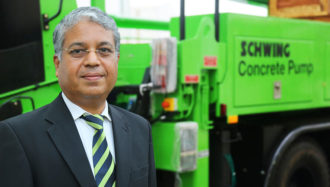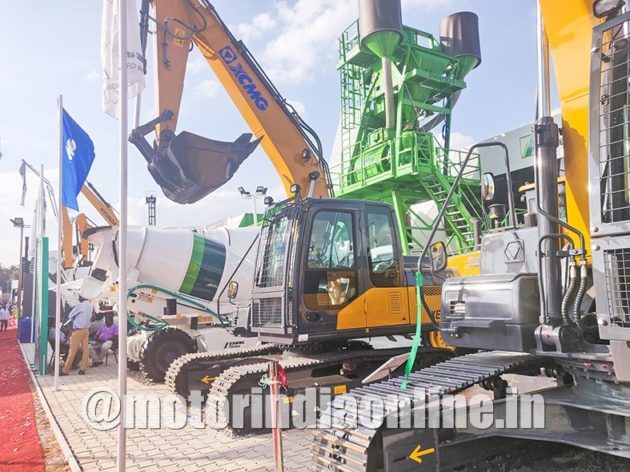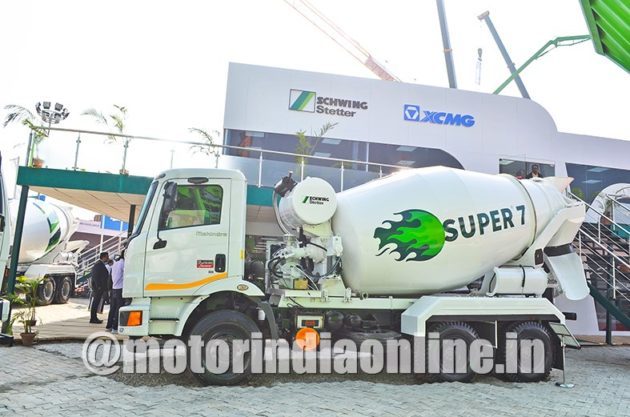The construction equipment industry is facing severe fallout from the lockdown measures in multiple ways. However, there are signs of hope for a rapid recovery in the second half of the current financial year – provided the pandemic is controlled in the coming weeks, along with certain elemental shifts in demand and processes that are likely to make things better for future, says V.G. Sakthikumar, Managing Director, Schwing Stetter India.

Impact on CE industry
Equipment manufacturing and sales are dependent on the spectrum of construction activities in the countries. The lockdown imposed to curb the spread of the coronavirus has seriously impacted the construction activities across the country in multiple ways. Firstly, this sector employs large numbers of migrant labourers, and their exodus and absence from construction sites is a big blow to the pace of the activities. Secondly, there is going to be an immediate shrinkage in demand for equipment as we are sitting with big inventories already. Thirdly, most of our concrete equipment are truck-based, and the CV industry is also going through a series of hurdles including BS-VI transition and sluggish sales. Hence, their revival in the next two quarters is also important to our growth. Further, the shipment of equipment to client sites is facing major hindrance with restrictions on inter-State logistics is quite challenging.
Coping and re-starting strategies
The pandemic has ushered in us a very unpredictable situation, which has brought in new ways of thinking and planning. We at Schwing Stetter India decided to work for immediate recovery by focusing on all those in our disposal, rather than waiting for external agents like government or market forces to cope up with the impacts. In the last week of March when the lockdown was announced, the first thing we did was to dispatch all those finished goods lying with us, especially those means for exports and high-profile customers or construction sites. We worked on our internal processes and management activities to address the new challenges, and as a result, we were not so badly hit in revenue that month. We were able to realize around 70 per cent of our average monthly invoicing in March, followed by 20 per cent in April.
We resumed our company operations in the second week of May after a brief delay than what we planned for. We got all clearances and put safety protocols in place to resume 50 per cent of our operations. However, lack of public transportation and severe mobility restrictions in Kanchipuram district, where our plant is located, with the adjoining Chennai city is a major hindrance to our employees in commuting to work. At present, our production is on with 25-30 per cent workforce, and we are targeting 50 per cent of our average monthly invoicing. Our expansion plans for this year will continue; we are getting ready our second facility that was supposed to become operational by this time but may take another three months.
Further, component sourcing and supplies for our production is not affected, since our products are designed and components sourced from Germany. We also import fully-built machines from China for the domestic market, and those consignments are also reaching us on time without any troubles. We have already invested a lot in the digitization of processes and learning to carry on business with limited resources as efficiently as possible.
Outlook Present and Future
As a company, we believe in the long-term potentials of the CE industry. As far as the Indian construction sector is concerned, there are two key segments – real estate and infrastructural projects. Despite impacts, there are fresh hopes of an immediate revival in infra segment, as government projects away from containment zones are able to restart early with quick clearance of funds, sops on bank guarantee and liquidity easing steps by RBI. We expect the second half of this financial year to post a good revival, despite some hindrance from monsoon – all subject to one precondition that the pandemic is effectively controlled in the coming weeks.
Government investments on infrastructural projects are expected to continue since this infra construction is the best way to make money reach the hands of people. This will help the industry to restart smoothly. Despite some immediate shrinkage, there is going to be elemental shifts in demand for construction activities in the coming days, backed by hospitality and healthcare, logistics, and e-commerce verticals. New opportunities out of India’s push towards self-reliance and re-shifting of industries from other parts of the world to our country are great, we expect governments to invest more on establishing industrial parks and other industrial infrastructure.
On the whole, there is going to be a ‘new normal’ in a positive sense, where the status quo is being challenged and so, going forward is going to be much easier in tackling any challenges of this kind.

